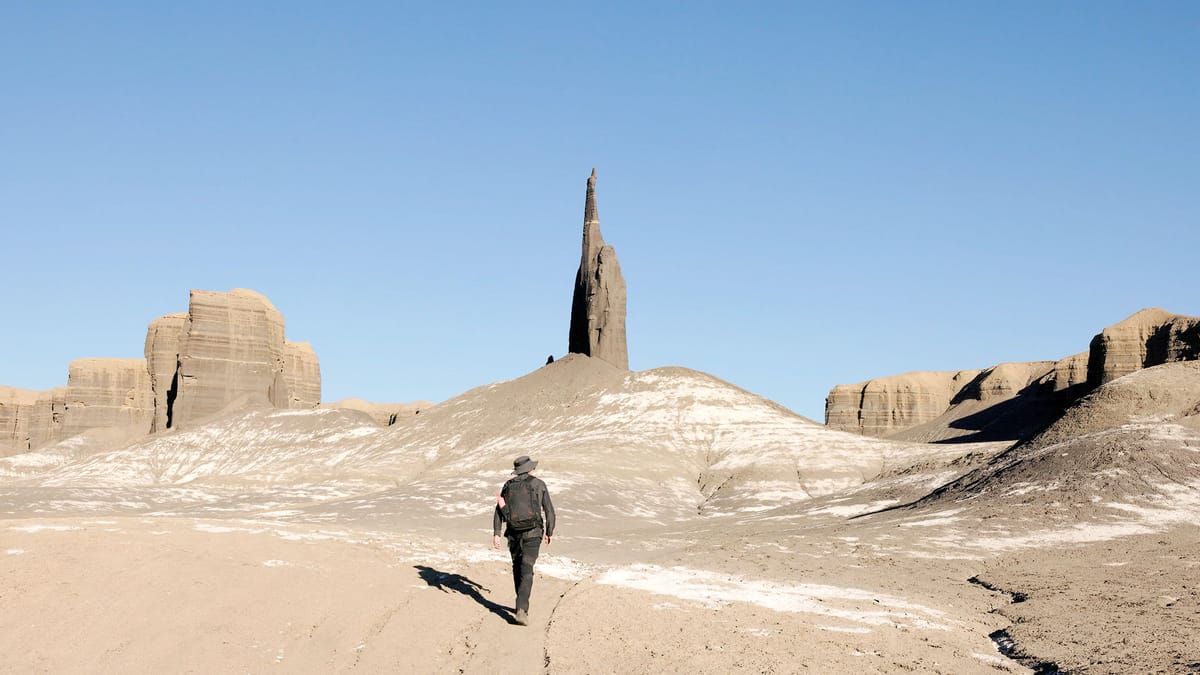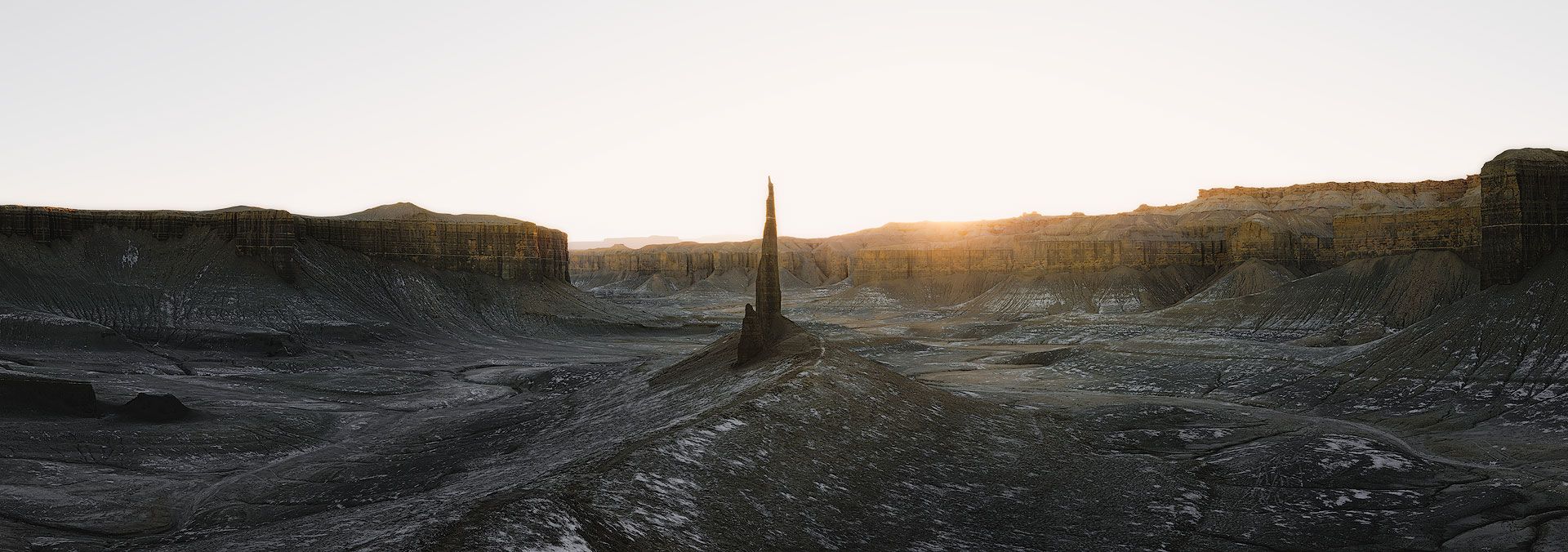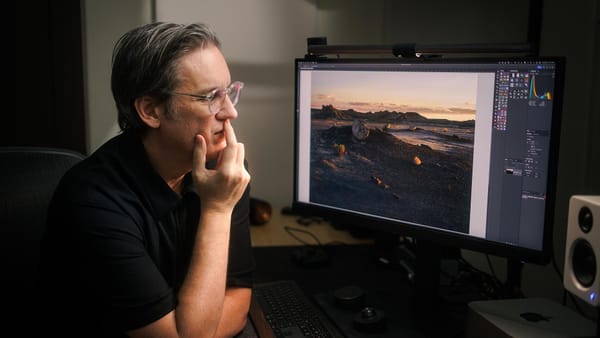Chasing landscapes for the wrong reasons
My experience pursuing a mysterious black spire in the Utah desert

In early 2018, I was researching locations for an upcoming landscape photography trip to Utah. It was then I came across an image of a tall, black spire in the desert. The image had been posted to a rock climbing forum and looked like a still from a Stanley Kubrick or Ridley Scott film. I couldn't find any additional information about the unusual rock formation, other than it was nicknamed "Long Dong Silver" (lovely) and was somewhere "near Hanksville, Utah".
Later that same year, I traveled to Hanksville and visited the local Bureau of Land Management office. I showed a BLM employee the image of the black spire on my phone, but he claimed he'd never seen it before. Had no idea where it was. As a result, I returned home without finding or photographing the spire.
(In retrospect, I should have visited a local ATV rental shop, for they almost certainly would have known where it was.)
In the years thereafter, more photos and even videos of the spire appeared online. Blog posts too including the spire's exact GPS coordinates. A secret place once known mostly to locals and a few rock climbing enthusiasts was slowly going viral amongst hikers, climbers, and landscape photography enthusiasts around the world.
Despite its diminished mystery and newfound popularity, I still wanted to see and photograph it. So in late 2022, I returned to Utah, packed my camera bag, put on my hiking boots and sun hat, and went looking for it.
Along the way there were numerous footprints and deep tire tracks from ATVs, motorcycles, and even full-sized 4x4s. Clearly, many people were now visiting. I had imagined the spire being miles away in some remote canyon, but in reality it was tucked inside an alcove only a couple of miles off State Route 24. Thirty minute hike at most.
Once there, I followed the footprints of others and ascended a hill directly behind the spire. I excitedly surveyed the landscape for the right composition, mounted my camera on a tripod, balanced my ball head for panoramic rotation, and began shooting the landscape image I intended to create four years prior.
But with each click of the shutter, I could feel my enthusiasm slowly waning.

For one, the light wasn't optimal. The sky (as usual in Utah) was crystal clear and the sun was setting directly behind the spire. I waited until the last few seconds of light before the sun dropped below the butte and the entire valley was cast in shadow. I would have greatly preferred more light on the spire and surrounding valley, but it was the best I had to work with at the time.
But I was disappointed with more than the light. I started feeling disappointed with myself. Standing there behind my tripod pressing the shutter, I didn't feel creative. I felt I was simply moving through the requisite technical steps of re-creating an established shot. I was checking a box on a photography bucket list and creating images for the wrong reasons.
As a result, I skipped producing the video I intended to make. The footage in the video above is all I recorded that day. I walked away from the experience more or less happy with the image I created, but don't feel a personal connection with it.
I do believe there's value in recreating images to learn the technical side of landscape photography. For example, I've learned from taking panoramic images like the one above that 1) a level tripod or base helps minimize cropping, 2) a focal length of 50mm or longer looks better and more natural, 3) more images should be captured than are needed (can always crop later), and 4) consistent focus and exposure values should be used for every image.
These are things landscape photographers learn through trial and error and by going out and attempting to create similar photographs to ones they admire. It's a process through which the technical side of the craft is better understood and appreciated. I see it as being similar to young musicians learning the notes and chords of songs by their favorite artists to find their own musical voice and style.
But once the technical side of photography is learned, a photographer must flex their creative muscles to continue growing. That means spending less time placing my tripod in the same place as others (past and future), and more time focused on creating original, one-of-a-kind images that say something about who I am and how I see the world.
What I enjoyed most about the experience was simply being there and seeing the spire and surrounding landscape with my own two eyes. By the way, the panoramic image above is not wide angle — 45mm in fact — so the field of view accurately depicts the actual scale and magnitude of the landscape as seen by the human eye.
It's surreal. It's wonderful. And unfortunately, it may not be around much longer.
While there, I was joined by two other spire-seekers. One was a woman from Utah who was escorting an out-of-state friend. She claimed to have visited the spire multiple times over the years, and that "it gets a little smaller every time I see it."
Sad truth is, the spire is rapidly disintegrating and will eventually dissolve and disappear. This is perfectly natural, for the entire landscape is constantly eroding and changing. But the spire's erosion may be accelerated due to its popularity amongst rock climbers.
For me, the spire is a fantastic example of the unexpected beauty that occasionally emerges out of the chaos of nature. There's a gorgeous symmetry to it, like a man-made sculpture from an artist placed in just the spot. A remarkable coincidence of rock, weather, erosion and time. Incredible to imagine what it must have looked like a hundred years ago.



